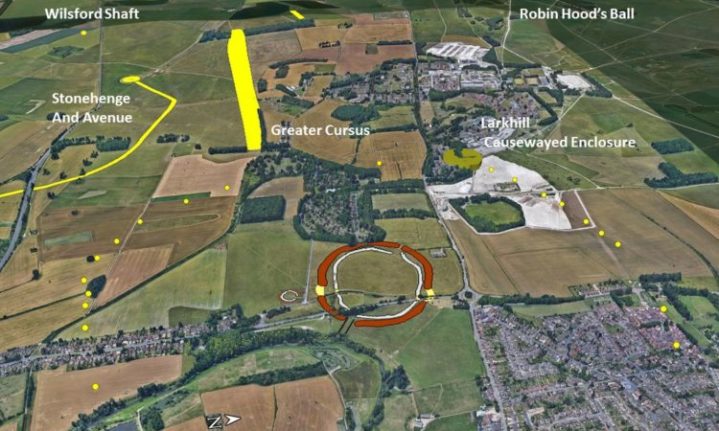A team of archeologists have discovered prehistoric shafts in close proximity to Stonehenge. The shafts are believed to date back to the Neolithic period.
Stonehenge is considered one of the most famous archeological sites on Earth.

Stonehenge is a prehistoric monument located in Wiltshire, England.
A statement released by the University of St Andrews details the finding. Roughly 20+ shafts were discovered. Each measured 10m in diameter and 5m deep.
These shafts form a circle more than two kilometres in diameter which encloses an area greater than three square kilometres around the Durrington Walls henge, one of Britain’s largest henge monuments, and the famous smaller prehistoric circle at Woodhenge.
Archaeologists believe that the shafts served as a boundary to a sacred area or precinct associated with the henge. The Neolithic period, which is associated with the first farmers in Britain, is characterised by the development of ornate, and occasionally very large, ritual structures and enclosures, including the great stone circle at Stonehenge.
However, no comparative prehistoric structure in the UK encloses such a large area as the circle of shafts at Durrington, and the structure is currently unique.
New circle discovered near Stonehenge
Archaeologists from @EarthSciStA and @UniofBradford are celebrating the discovery of a major new prehistoric monument only a short distance from @EH_Stonehenge
Find out more ⬇️https://t.co/W9LqV0DLYW#evertoexcel pic.twitter.com/9aJbxiP0Gw
— University of St Andrews (@univofstandrews) June 22, 2020
Coring of the shafts provided radiocarbon dates suggesting these features are Neolithic and were excavated more than 4,500 years ago, around the time the Durrington Walls was constructed.
Dr Richard Bates, of the School of Earth and Environmental Sciences at the University of St Andrews, said: ‘Seeing what is unseen! Yet again, the use of a multidisciplinary effort with remote sensing and careful sampling is giving us an insight to the past that shows an even more complex society than we could ever imagine. Clearly sophisticated practices demonstrate that the people were so in tune with natural events to an extent that we can barely conceive in the modern world we live in today.’
Tim Kinnaird, of the same university, said: ‘The sedimentary infills contain a rich and fascinating archive of previously unknown environmental information, and with optically stimulated luminescence profiling and dating, we can write detailed narratives of the Stonehenge landscape for the last 4,000 years.’
To read the full findings report click here.
Image credit: Unsplash

















